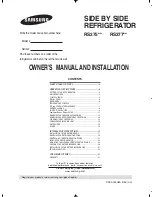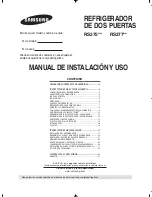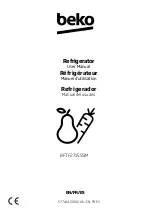
Storing food in the refrigerator section
30
Danger of explosion.
Do not store explosive materials in
the appliance or any products
containing propellants (e.g. spray
cans).
If storing food which contains a
lot of fat or oil in the appliance or the
appliance door, make sure that it
does not come into contact with
plastic components as this could
cause stress cracks or break the
plastic.
Make sure that no oil or grease leaks
onto the plastic parts of the
appliance. This can cause the plastic
to crack and break.
Different storage zones
Due to natural air circulation there are
different temperature zones in the
refrigerator section.
Cold, heavy air sinks to the lowest
section of the appliance. Make use of
the different temperature zones when
placing food in the appliance.
To allow air to circulate efficiently, do
not pack food too closely together in
the refrigerator.
Do not cover the fan in the rear wall of
the refrigerator, as this is essential for
keeping the appliance cool.
Food must not touch the back of the
refrigerator section as it may freeze to
the back wall.
This appliance has Dynamic cooling,
which helps to keep an even
temperature when the fan is running,
making the difference between the
various zones less pronounced.
Warmest area
The warmest area in the refrigerator
section is at the top in the front area
and in the door. Use this for storing
butter and cheese.
Coldest area
The coldest area in the refrigerator
section is directly above the fruit and
vegetable drawer and at the back of the
appliance.
Use these areas to store all delicate and
highly perishable food, e.g.
– fish, meat, poultry,
– cold cuts, ready meals,
– dishes or baked goods containing
eggs or cream,
– fresh dough, cake mixtures, pizza or
quiche dough,
– soft cheese and other dairy products,
– pre-packed vegetables and other
fresh food with a label stating it
should be kept at a temperature of
approx. 4 °C.
















































